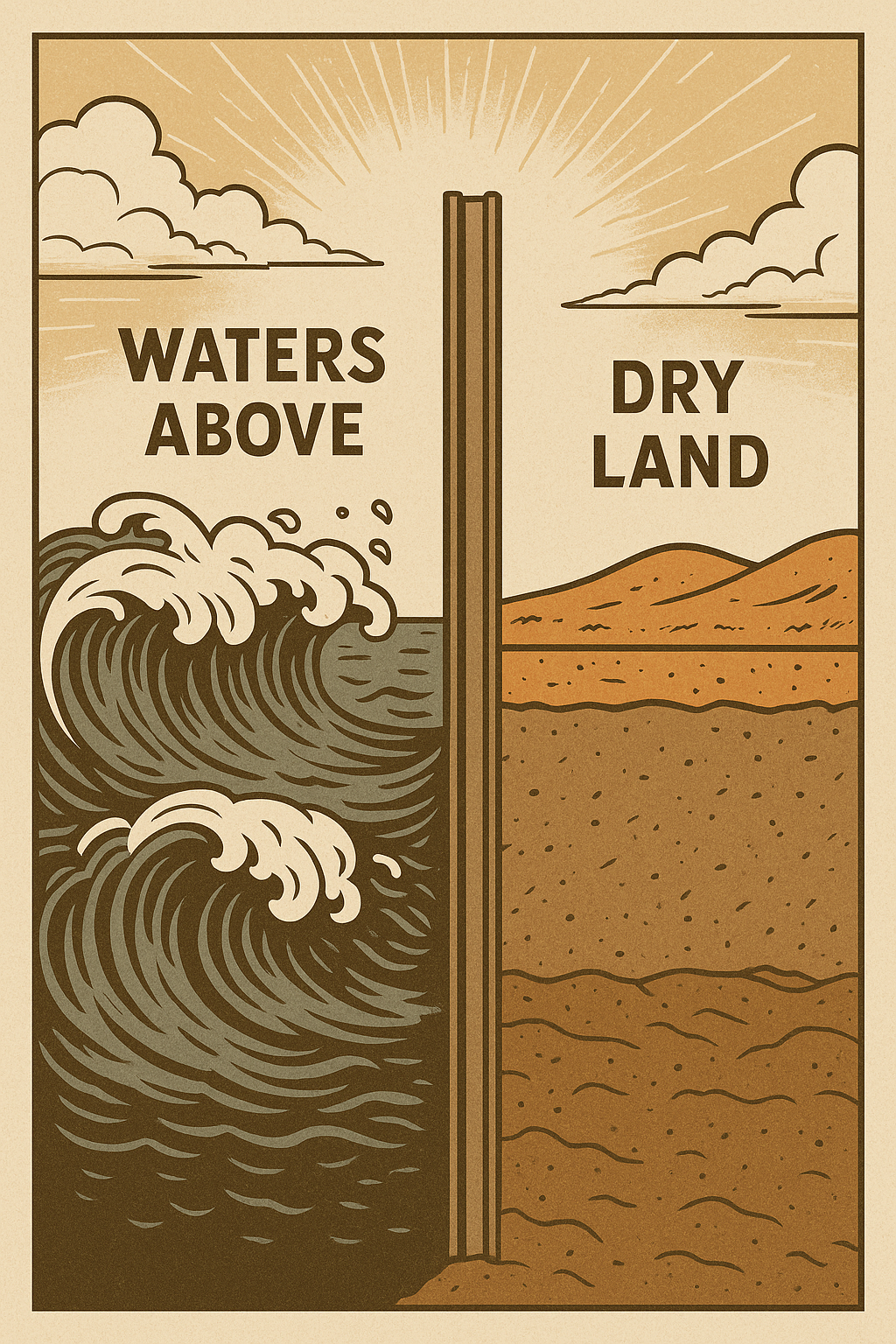In the beginning, long before the invention of steel reinforcement, finite element models, or even spreadsheets, there was the first geotechnical project ever recorded. According to the Holy Book (Genesis 1), the earth was formless, watery, and chaotic. And then… something remarkable happened.
An invisible boundary was drawn. Waters were pushed apart: some above, some below. The sky came into being. But what really catches the eye of a geotechnical engineer is this: a retaining system was quietly installed.
Yes, you read that right.
Before skyscrapers, tunnels, or dam abutments, the first recorded soil-structure interaction was essentially a retaining wall, a divine sheet pile wall used to hold back water so that work can begin in a controlled, dry environment.
But here’s the thing: even after the waters were separated, there was still water within that enclosed space. The presence of a sheet pile wall doesn’t automatically mean dry ground. That inner water had to be drained. Slowly. Carefully. Only then could firm land appear.
And in geotechnical terms, that slow transformation, from saturated to dry ground, is known as consolidation. As water seeps out and pressure reduces, strength builds. The ground becomes trustworthy. Usable. Ready for purpose.
When Creation Meets Site Preparation
This wasn’t random. Before laying foundations, literally or metaphorically, something had to give. Water had to move. Pressure had to reduce. Stability had to rise.
And if you’ve ever tried to build on saturated clay, you’ll understand why.
But let’s pause here, not to marvel at soil (we’ve done that already), but to reflect on why this matters for us, not just as engineers, but as humans.
Life Needs Cofferdams
There are seasons in life when everything feels like water: too much, too fast, too chaotic. Stress builds. Noise rises. You can’t see where to step, let alone where to build.
And in moments like that, we need our own personal cofferdams—spaces of separation and stillness. Not as escape routes, but as temporary, sacred zones where we can drain out distractions, let pressure dissipate, and prepare to stand again.
Geotechnical Engineers know that water under pressure doesn’t just vanish, it needs a way out. It needs drainage paths. Life is no different.
Sometimes strength returns not through more activity, but through intentional stillness.
Sometimes the ground becomes firm only after the water has been allowed to leave.
Sometimes, to create, you must first separate.
Engineering Meets the Soul
In our field, we carefully calculate how long consolidation takes. It’s rarely fast. The soil settles gradually, becoming more stable with time. Likewise, we don’t bounce back from life’s pressures in one deep breath. Sometimes, it takes a season. And that’s okay.
What matters is that the process is underway.
You’re draining. You’re strengthening. You’re consolidating.
And one day, you’ll look back at the water that once overwhelmed you and realise: it made you stronger. It made the ground beneath your feet firm. It prepared you to build something enduring.
Final Thoughts: A Holy Blueprint
Whether you see it as divine design or just a powerful metaphor, the first act of geotechnical brilliance was not man-made, it was heavenly. It reminds us that the principles we rely on, separation, drainage, strength, stability, are not just engineering concepts. They are life truths.
So, the next time you design a retaining structure or analyse settlement rates, remember: you’re part of an ancient tradition. One where even chaos had to step aside to make room for purpose.
Because whether its land or life, nothing strong is built until, the ground is ready.
© 2025 Damilola Barnabas Akinniyi. All rights reserved.
This content is original and protected. You may quote small portions (with credit and link), but full reproduction is prohibited without written permission.


